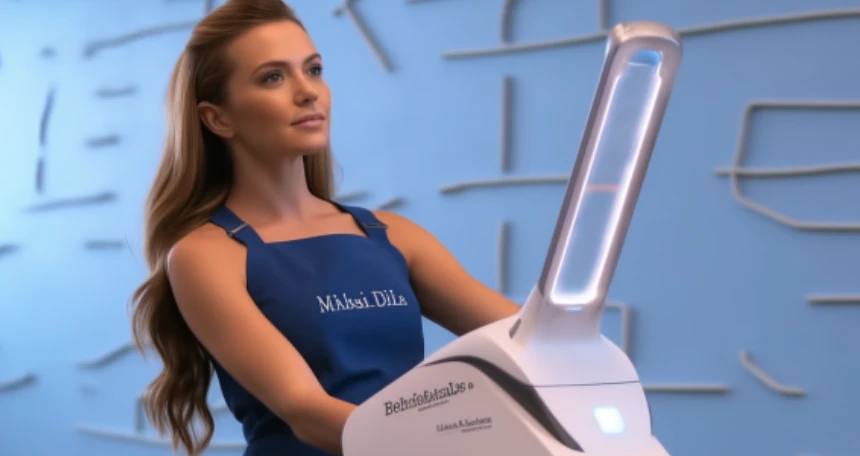
Here is a 800-word article on the topic of eating shrimp after CO2 Laser treatment in Canada, with the requested formatting and content structure.
Enjoying Shrimp After CO2 Laser Treatment in Canada
When undergoing cosmetic procedures like a CO2 laser treatment, patients often wonder about the dietary restrictions they need to follow during the recovery process. One common question is whether it's safe to eat shrimp after a CO2 laser treatment in Canada. In this article, we'll explore the considerations around this topic and provide guidance for those seeking to enjoy their favorite seafood dishes while healing from their procedure.
Understanding CO2 Laser Treatments
CO2 laser treatments are a popular option for addressing a variety of skin concerns, from fine lines and wrinkles to age spots and scarring. The procedure works by using a concentrated beam of light to remove the outer layers of the skin, stimulating the body's natural healing process and promoting the growth of new, healthier skin cells.
During the recovery period, patients may experience some redness, swelling, and sensitivity in the treated area. It's important to follow the post-procedural instructions provided by the healthcare professional to ensure proper healing and minimize the risk of complications.
Shrimp and Post-Laser Dietary Considerations
One of the primary concerns around eating shrimp after a CO2 laser treatment is the potential for allergic reactions. Shrimp is a common food allergen, and some people may be more susceptible to developing an allergic response during the healing process.
Additionally, the high protein content in shrimp can potentially slow down the healing process if consumed in excess. It's generally recommended to avoid large portions of protein-rich foods, including shrimp, during the initial stages of recovery to allow the skin to heal properly.
However, it's important to note that the specific dietary recommendations may vary depending on the individual's skin type, the extent of the treatment, and the healthcare professional's instructions. Some patients may be able to enjoy small portions of shrimp in moderation without any adverse effects.
Consulting with a Qualified Healthcare Professional
Before incorporating shrimp or any other food into your post-laser diet, it's crucial to consult with a qualified healthcare professional, such as a dermatologist or a plastic surgeon. They can provide personalized guidance based on your individual circumstances and the specifics of your CO2 laser treatment.
When choosing a healthcare provider, it's essential to consider the following factors:
1. **Medical Expertise**: Ensure that the healthcare professional performing your CO2 laser treatment is board-certified in dermatology or plastic surgery, with extensive experience in administering these procedures.
2. **Patient Satisfaction**: Research reviews and testimonials from previous patients to gauge their level of satisfaction with the healthcare provider's services and the outcomes of their treatments.
3. **Comprehensive Aftercare**: Look for a healthcare provider who offers comprehensive aftercare instructions, including detailed guidance on dietary considerations, to support your healing process.
By working closely with a qualified healthcare professional, you can ensure that your recovery from the CO2 laser treatment is smooth and that you can safely enjoy your favorite foods, including shrimp, as part of a balanced diet.
FAQs
1. **Can I eat shrimp after a CO2 laser treatment in Canada?**
- The ability to consume shrimp after a CO2 laser treatment can vary depending on the individual's skin type, the extent of the treatment, and the healthcare professional's recommendations. It's important to consult with a qualified healthcare provider before incorporating shrimp or any other food into your post-laser diet.
2. **How long should I wait before eating shrimp after a CO2 laser treatment?**
- The recommended waiting period can range from a few days to a few weeks, depending on the individual's healing progress and the healthcare professional's guidance. It's best to follow the specific instructions provided by your healthcare provider.
3. **What are the risks of eating shrimp after a CO2 laser treatment?**
- The main risks include the potential for allergic reactions and the potential to slow down the healing process due to the high protein content in shrimp. Consulting with a qualified healthcare professional is essential to assess and minimize these risks.
4. **How can I find a reliable healthcare provider for my CO2 laser treatment in Canada?**
- When choosing a healthcare provider, look for someone who is board-certified in dermatology or plastic surgery, has extensive experience in administering CO2 laser treatments, and offers comprehensive aftercare instructions, including guidance on dietary considerations.
By following the advice of a qualified healthcare professional and being mindful of your body's response, you can safely enjoy shrimp and other foods as part of a balanced diet during your recovery from a CO2 laser treatment in Canada.

